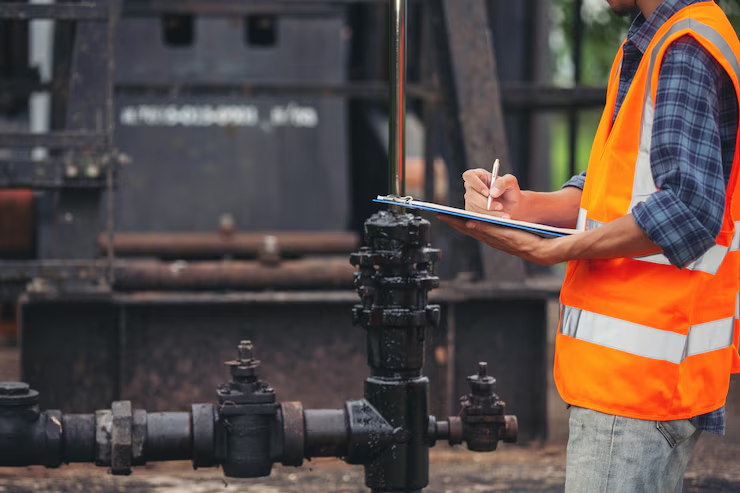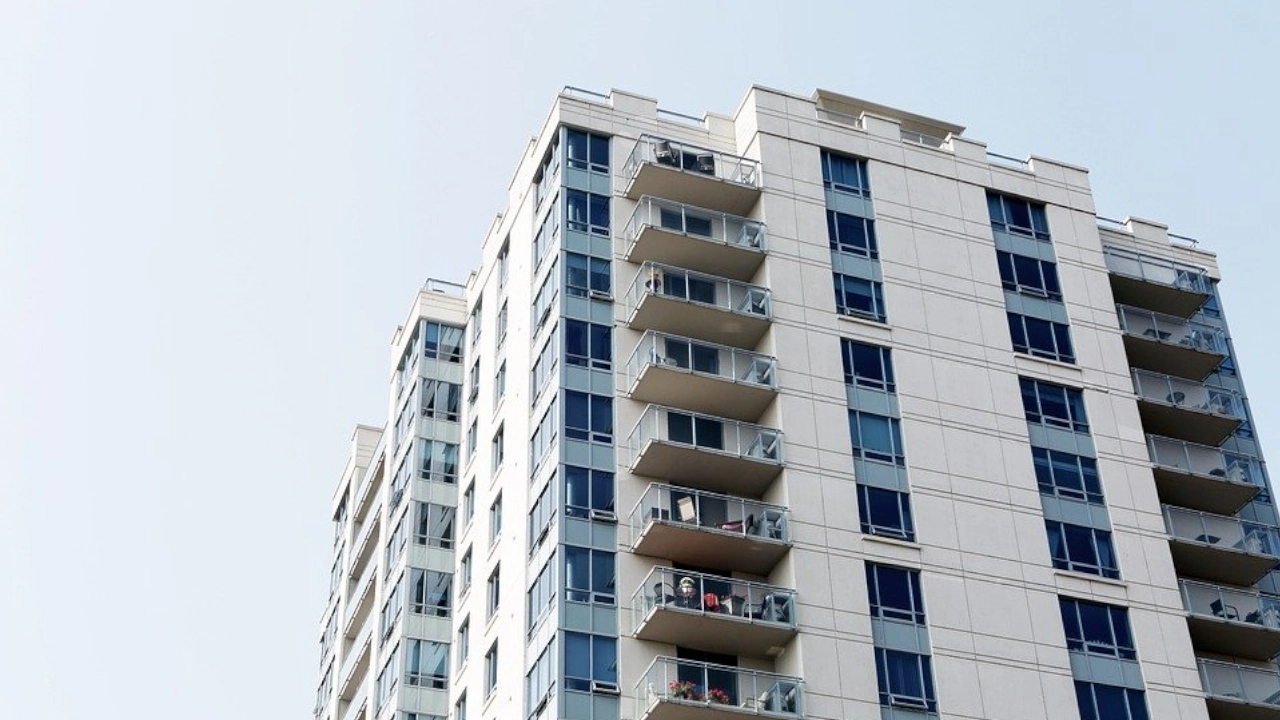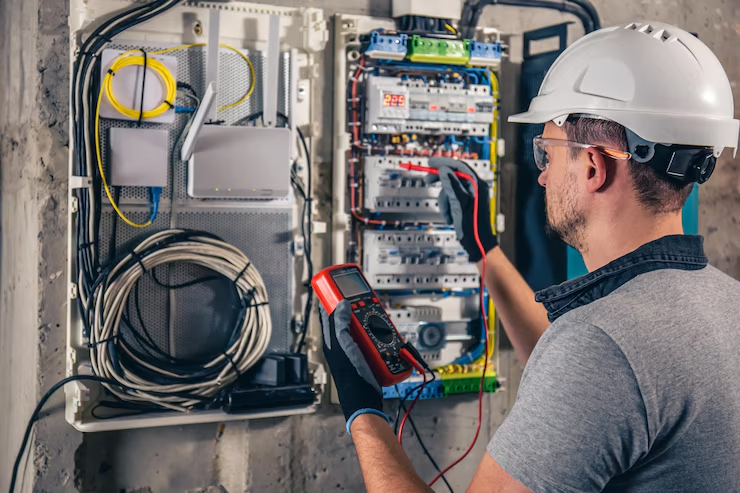
Termite And Moisture Inspection: Everything To Know In 2024
John Souffront

Believe it or not, termites are the biggest enemies of your home. So much so that by the time you notice a termite infestation, they’d already have caused costly damage.
To put this in a dollar figure, homeowners spend over five billion dollars every year simply to eradicate termites from their property and undertake essential repairs.
The worst part is that your insurance provider doesn’t cover your home for termite damage.
But what if I told you that there’s a cost-effective way to not only detect a termite outbreak early but also avoid it altogether?
Yes, that’s true; all you’ve got to do is schedule a termite and moisture inspection every once in a while. Moreover, you can even get one such inspection to protect your investment while you’re looking to buy or rent a property.
You can think of it as a home inspection that you schedule every once in a while to keep your home’s major systems in top shape.
Now, if you’re wondering what’s more to termite inspections and how you can get one, you’re at the right spot. Read on, as I’ve detailed everything you should know about these inspections, along with my own insights.
Termite and moisture inspection: What is it all about?
Before we get into the details of termite inspections, let me first answer a basic yet essential question: What is termite inspection?
As the name suggests, a moisture and termite inspection is a thorough examination of your home from the inside out and is done to detect termite infestation. Here, licensed termite inspectors will analyze every area of your home using their special skills and tools to detect termites and the extent of the problem.
For instance, a termite inspector will assess your home’s foundation, basement, crawl space, walls, roofs, etc., to name a few. Also, they will pay special attention to the wooden structures such as walls, doors, decks, etc., since wood is most vulnerable to termite invasions.
Furthermore, an inspector will assess the extent of moisture in the wooden components. That’s because less than usual moisture signals termite presence.
Finally, you’ll receive a termite inspection report, which, like a home inspection report, will detail the findings of the termite inspection.
Note: A termite inspection is different from a home inspection
When we talk about a termite inspection, you may confuse it with a regular property inspection. If not, you might think it is a part of your periodic home inspection.
But let me tell you that none of it is true.
You see, an inspection for termite detection is completely different from a general building inspection. That’s because not only are the areas inspected different for the former, but so are the inspectors who need to have a termite license.
Meaning if you want to schedule a termite inspection in your Florida home, you should only hire an inspector with an FL Termite License.
Simply put, you can’t hire general contractors, architects, engineers, etc., for termite inspections unless they’re trained professionals with a termite license.
Looking for a 40/50 year recertification inspection instead?
Get in touch with our 40 year recertification experts and receive a free inspection quote.
How is a termite inspection done?
Now that you know what a termite and moisture inspection exactly is, you might well be curious as to how it is done.
Well, for starters, you’ll have to schedule an inspection with a termite inspector, who will then visit your property.
Herein, it is essential that you give your inspector the time and space they need for a seamless inspection. So, I suggest you schedule an inspection on a convenient date.
Now, on the date of inspection, the termite inspector will examine both the interior and exterior components of your home, looking for potential termite incursion.
For instance, mud tubes are an obvious sign of termite infestation. Moreover, depending on the type of mud tube, there could even be the possibility of dry wood and subterranean termites being present.
As such, you can expect the termite inspector to look for these signals, among others.
How to prepare for termite inspection?
In order to obtain the best results out of termite inspections, you may have to prepare your home for the inspection. That’s because, although inspectors usually don’t require such advance preparations, by doing so, you’ll create the best conditions for termite detection.
So, how do you prepare for an upcoming inspection?
To start with, you can remove items from the attic, crawl space, garage, etc., as this will ensure easy access to these areas during the inspection.
You see, these areas are considered crucial for detecting termites. And easy access means there are greater chances of identifying even the earliest signs of termite damage.
All in all, here’s what you can do to provide termite inspectors an uninterrupted access:
- Attic – Remove all such objects from the attic that can prevent the inspector from accessing the roof.
- Crawl space – While crawl spaces don’t usually have items, I still suggest you recheck the area for items and remove them.
- Garage – Talking about items in the garage, my advice is that you remove such objects that block access to expansion joints. Also, you should remove items that are closer to the walls.
- Deck or patio – Remove deck furniture or any other item away from the walls.
- Outer walls and fences – Remove the tree branches or plant growth from the walls and fences.
You might also want to read – The Ultimate Guide To Attic Inspections.
What does a termite inspection expert look for?
Having seen the basics of termite inspections, you might wonder what a termite inspector will look for in your home.
To give you an idea, inspectors will look for signs of termite infestation that you can not identify yourself. For instance, they will examine the flooring, walls, baseboards, etc., and determine if there are termites.
Overall, here are the things that your termite inspector will be on the lookout for during a termite and moisture inspection:
#1. Hollow-sounding materials (especially wood)
The most obvious sign of termite infestation is hollow-sounding materials. And this is especially true for such components of your home that use wood, cardboard, or paper-based materials like frames, eaves, doors, fascia, etc.
You see, while these materials look perfectly fine from the outside, the reality is that termites have eaten them up from the inside. Worse, it is possible that termite infestation has already weakened these materials and that they no longer provide essential support to your home.
So, a termite inspector will first tap on the surface of these materials. And upon noticing a hollow sound, they’ll press the material with a screwdriver, which will break open and expose termite tunnels.
#2. Warping or blistering
Another important sign of termite presence is the warping or blistering of your home’s wooden components.
Now, it is commonplace for wooden doors, frames, or walls to be a little warped or the paint coating to be blistered. This usually happens due to water damage and is a part of natural wear and tear.
However, when it comes to termite detection, inspectors take these signs seriously and thoroughly examine them.
Why?
Well, dry wood termites usually create a living space for themselves in the wooden materials they invade. And to do so, they remove the moisture from wood, which results in blistering and warping.
#3. Mud tubes
Subterranean termites create mud tubes out of wood and soil, something you may notice at obscure locations in your home. For instance, mud tubes are commonly found in areas such as underneath the stairs, behind the closet, under the porch, etc.
You can think of mud tubes as the highway network for the termites. In fact, if left undetected, these tubes will only help termites grow and cause more damage.
Nevertheless, the one problem with mud tubes is that they’re in hidden places, so you may not notice them until huge damage is caused.
And this is where the role of termite inspectors becomes essential as not only do they locate such termite tubes but also highlight the location for effective elimination.
#4. Frass and kick-out holes
Frass or termite dropping is also a common way to tell if there’s termite damage.
You see, frass looks exactly like sawdust and is something that dry wood termites excrete after they’ve ingested wood and squeezed out moisture content.
Furthermore, termites also create tiny kick-out holes to get rid of frass from their colonies.
But like mud tubes, frass and kick-out holes are also found at obscure locations, making the role of termite inspections important. Here, a termite inspector will examine areas such as crawlspace, attic, basement, closet, etc., looking for these signs of termite colonies.
#5. Exit holes and discarded wings
Termites create exit holes during the late spring and summer seasons, which is also their reproductive season. In fact, these holes are created by termites to help with reproduction since they allow termites to swarm in.
Also, after termite reproductive season, you might find their discarded wings around foundation walls, patios, or even inside spider webs.
Now, both exit holes and discarded wings signal that a huge termite colony might be present nearby. And this is exactly why termite inspectors are always on the lookout for these signals.
Bonus: Termite inspectors will also examine additional household components
Apart from the key household components like attic, crawl spaces, and basements, termite infestation can also be found in other areas and in different forms. And this includes the following:
- Wooden structures such as carport.
- Wooden fencing around your home.
- Fallen tree branches and other forms of deadwood on your property.
- Firewood stored closer to the ground.
- Wood mulch on your property.
- Cracks or expansion in bricks or joints.
So, you can expect termite inspection experts to examine the above areas. And if they don’t, I suggest you request them to inspect these areas.
What happens after a moisture and termite inspection?
After the completion of the inspection, the inspector will prepare a termite inspection report detailing their findings. Herein, you can find the details of the areas where termites have been detected, the extent of termite infestation, and the damage they’ve caused.
Not to mention, your inspector or inspection company will also walk you through the report’s findings.
Thereafter, you can hire a pest control company, share the termite inspection report with them, and eliminate termite colonies from your property. Also, you can replace such building components or materials that have been damaged by termites.
You might also want to read – A Complete Guide To 40 Year Recertification For Condo Buildings.
Termite and moisture inspection: Frequently asked questions
When do you need termite inspections?
As a homeowner, you should schedule an inspection for termite detection once every six months.
For instance, while your first inspection for the year can be during spring or before summer, you can schedule the second inspection after summertime. Here’s why:
- The former is the start of termite reproduction season, when termites start to swarm in.
- The latter is the end of the season, and there’s a good chance to spot termite colonies.
Furthermore, I suggest you get one such inspection before you buy or rent a home.
That’s because a termite inspection can also provide you with a clear picture of potential termite infestation, as a pre-purchase home inspection does for general building conditions. As such, you’ll be able to make well-informed purchase or lease decisions.
Who pays for termite inspection buyer or seller?
As a potential buyer wanting to get a termite inspection, it’s you who will pay for the inspection.
You see, termite inspections are not a part of purchase deals, and thus, sellers are not liable to pay for one. Nonetheless, these inspections are crucial as you never know the extent of termite damages and how much they can cost you in the future.
How much does a termite inspection cost?
A complete moisture and termite inspection in Florida can cost you anywhere between $75 and $150, as per the latest industry average.
However, this is simply an average, and the exact amount you pay might differ depending on the size and location of your property, among others.
You might also want to read – Commercial Building Inspection Cost: Factors & Considerations.
To sum up
As you might already have figured out, a termite and moisture inspection is essential to maintain your home and prevent costly damages. Not to mention one such inspection also helps you make smart purchase decisions and steer clear of unwarranted liabilities.
In fact, this is exactly why I suggest a termite inspection to everyone from homeowners to tenants to potential home buyers.
And what better way to do so than to schedule it alongside your regular home inspections?
Now, if you’re looking to get a home, condominium, or commercial building inspected, you can get in touch with us.
We’re Souffront Construction & Engineering, a full-service engineering and inspection firm with a team of seasoned property inspectors. And we’ve got all your inspection requirements covered on a budget.
John Souffront
John Souffront is a seasoned leader in the construction and engineering industry, with over a decade of experience at the helm of Souffront Construction & Engineering. Known for his unwavering commitment to excellence and innovation, John has propelled his firm to the forefront of the field, delivering cutting-edge solutions for complex projects around the country.
Build Your Project
Ensure safety and compliance on your construction site with our experienced team. Call us today.
Contact Us

